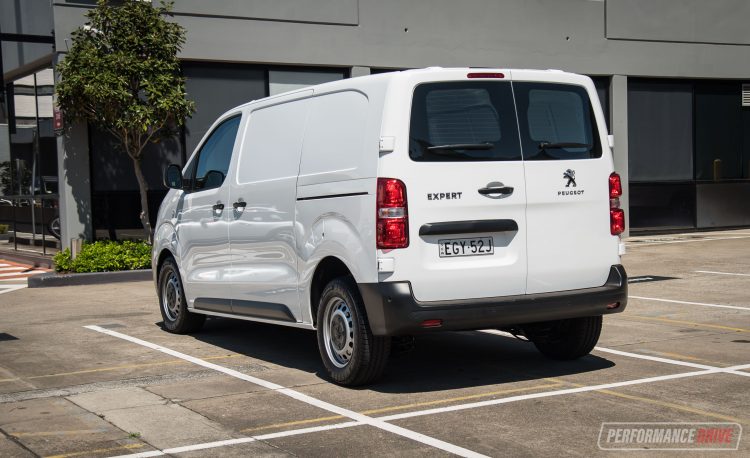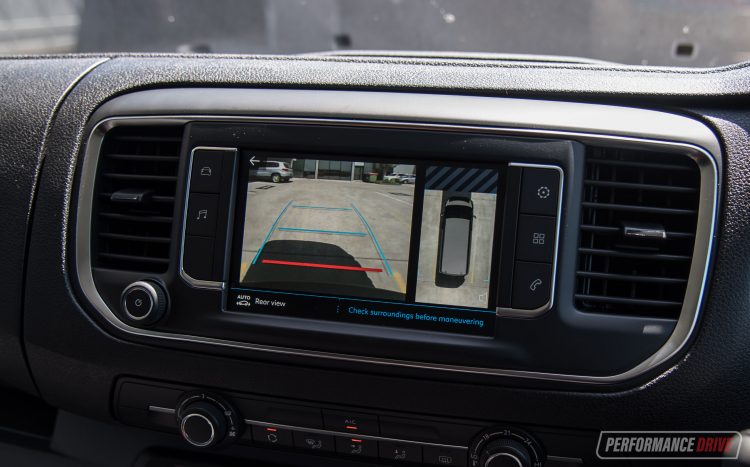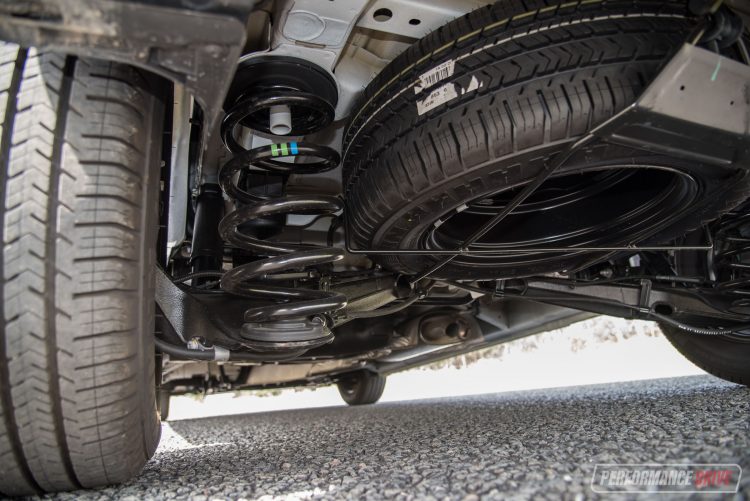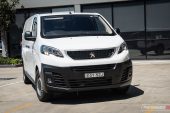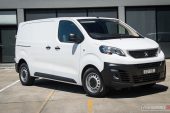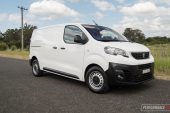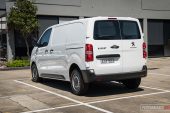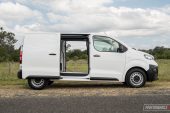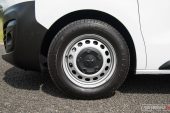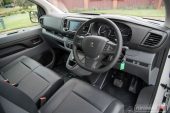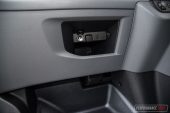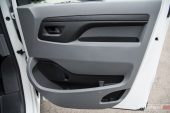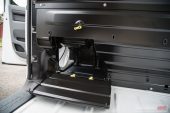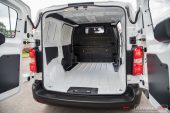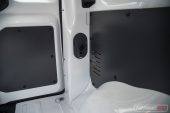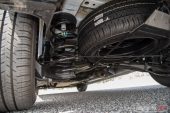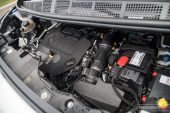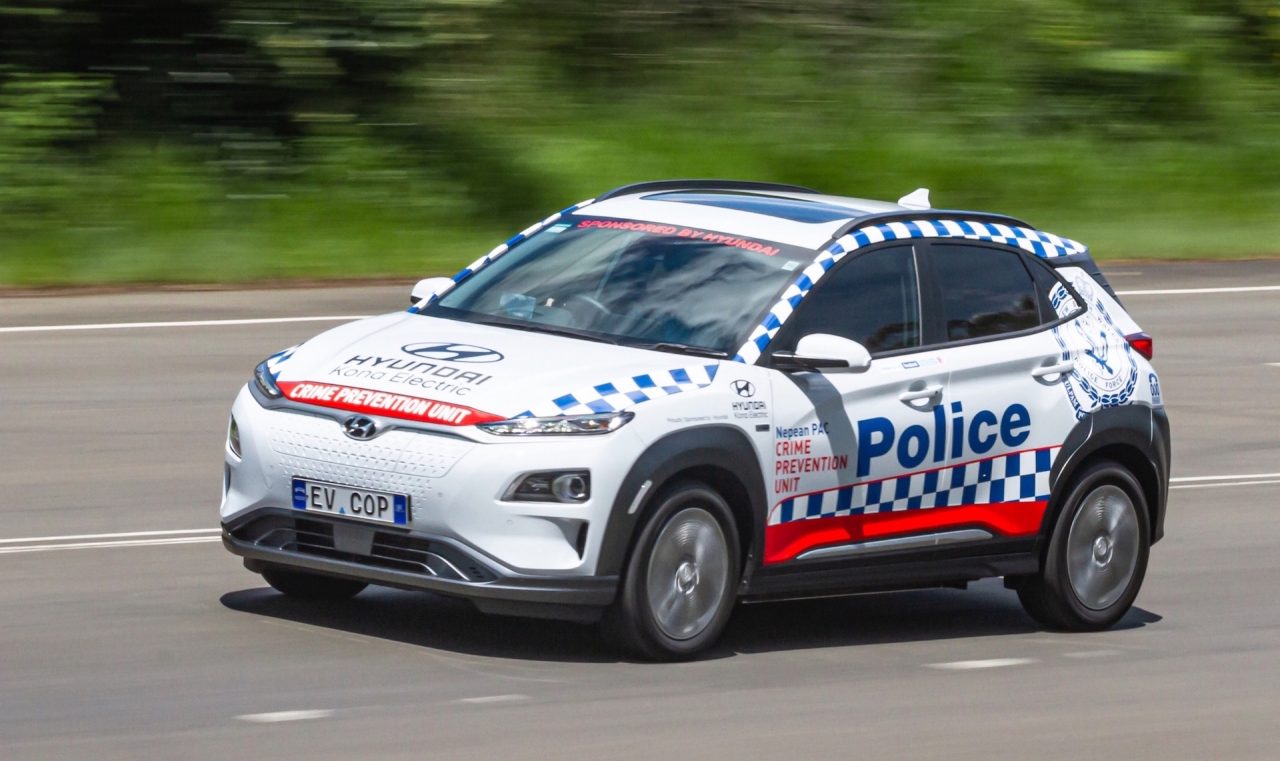Looking for a new work van? You may not have heard of or even seen the 2020 Peugeot Expert, but you should give it a closer look at it does present very attractive packaging and value.
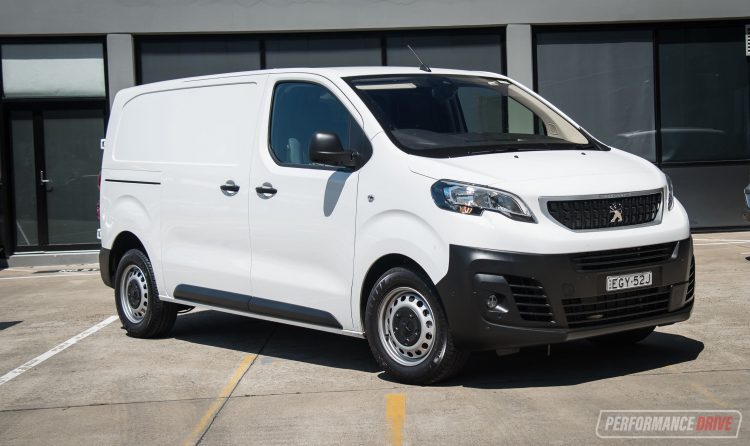
In Australia there are two main models, the Standard and the Long. The Standard is the regular size and it’s available with either an 85kW/300Nm 1.6-litre turbo-diesel paired with a six-speed manual only, or a 110kW/370Nm 2.0-litre turbo-diesel matched to either a six-speed manual or auto.
The Long adds 35cm to the overall length (mainly in the rear overhang), and 4cm in additional height. It’s only available with the 2.0-litre engine, but with either 110kW/370Nm or 130kW/400Nm. And it comes in auto form only.
Prices start from $39,990 for the Standard 2.0L manual, and from $42,490 for the auto as tested here (excluding on-road costs). All models are covered by a five-year/200,000km warranty, with servicing intervals every 12 months or 20,000km (whichever comes first).
2020 Peugeot Expert 150 HDI Standard – THE SPECS
[column width=”47%” padding=”6%”]Engine: 2.0-litre turbo four-cylinder
Output: 110kW@4000rpm / 370Nm@2000rpm
Transmission: Six-speed auto
Drive type: Front-wheel drive
Wheels: F & R: 16×6.0, 215/65
ANCAP: Not tested (NCAP 5 stars)
Kerb weight: 1907kg
Power-to-weight: 17.33:1 (kg:kW)
Official fuel economy: 6.4L/100km
Economy during test: 7.1L/100km
Fuel capacity/Type: 69L/Diesel[/column] [column width=”47%” padding=”0″]Power efficiency: 17.18kW:L/100km
0-60km/h: 4.73 seconds*
0-100km/h: 10.56 seconds*
60-110km/h: 7.81 seconds*
1/4 mile: 17.53 seconds at 129.2km/h*
Max acceleration: 0.572g
100-0km/h braking: 3.61 seconds at 46.49 metres*
Max deceleration: -1.026g
Decibel at idle: 54*
Peak decibel at 60-100km/h: 88*
Priced from: $42,490[/column][end_columns]
* Figures as tested by PerformanceDrive on the day. Factory claims may be different
2020 Peugeot Expert 150 HDI Standard – THE PACKAGE
The new Expert hit the local market in 2019, and it hasn’t been doing too well in terms of sales. During 2020 just 294 units were sold, making it the least popular van in its class, against nine other rivals. For perspective, Toyota sold 8391 HiAces, Hyundai sold 3919 iLoads, and Ford sold 2379 Transits. Word could perhaps be better spread to help create more awareness for the Expert in Australia, especially against those more established rivals.
This is an all-new vehicle from Peugeot, albeit debuting in 2019. It sports the company’s latest design language which certainly helps it stand out among the competitors. You’ve got a sophisticated front grille theme, classy headlights, and a decent-length bonnet for added safety. Around at the rear are a set of split barn-style doors. Uncommon in this segment, but they do have their advantages in some circumstances, such as very tight parking spaces.
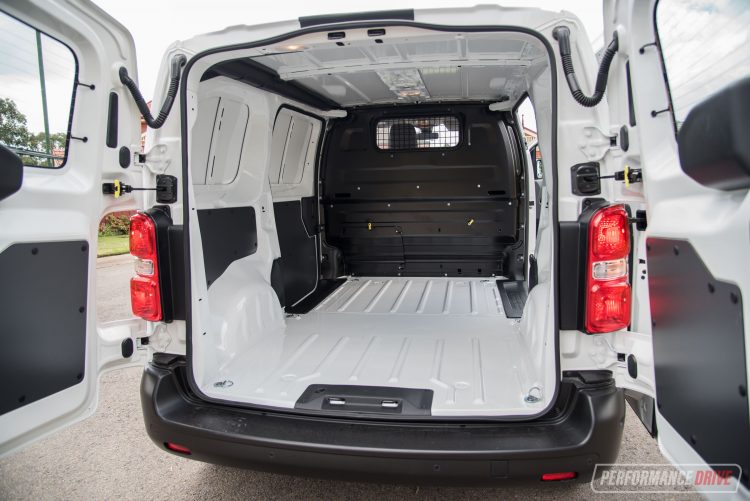
Underpinning the Expert is PSA’s widely-used EMP2 platform. This is actually a passenger vehicle layout, shared with vehicles such as the current 308 and 508, and even the Citroen C5 Aircross SUV. It has obviously been adapted to suit heavy-duty workloads in this case, but it does feature a comfortable independent trailing-arm rear suspension arrangement. French cars are renowned for comfort, so it’s intriguing to see the philosophy extending to commercial vehicles.
Unlike some rivals, the Expert is front-wheel drive. This might not seem as heavy-duty as rear-wheel drive, but the benefit is optimised space efficiency inside. The Standard model offers 5800 litres of cargo volume, but if you need more the Long version offers 6600 litres. Tie hooks are strategically positioned around the place, and we love the ‘Moduwork’ secret door latch under the passenger seat. This is perfect for carrying very long and thin items.
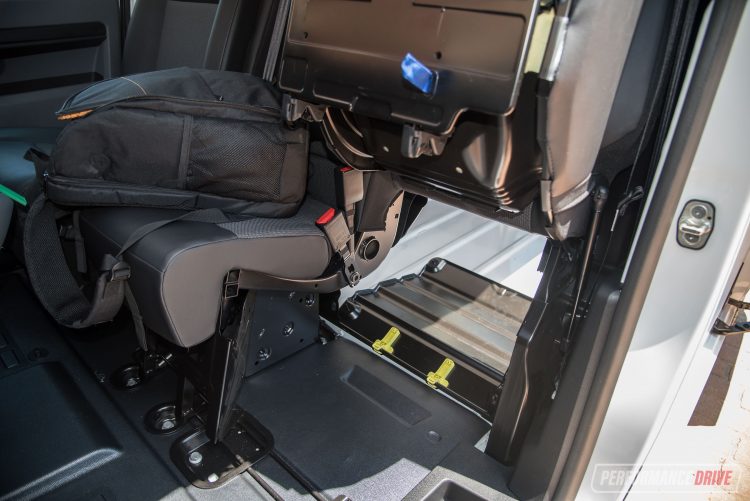
The payload capacity for the Standard is 1300kg, with a braked towing capacity of 2100kg. The top 130kW Long version stretches that to 2500kg, even though the payload drops to 1250kg for some reason. Peugeot claims the Expert is capable of carrying three Euro pallets on board. The maximum load width is 1636mm, with a maximum load height of 1640mm for all versions. The load length is 2512mm for the Standard, and 2862mm for the Long. If you utilise the ‘Moduwork’ hatch the length grows to 3674mm and 4024mm, respectively.
Dual sliding doors ensure maximum practicality, and there’s even a 12 volt socket hidden in the back corner. This is obviously ideal for recharging work tools, but also great for hooking up a chiller box during those dirt bike camping trips with the boys on the weekend.
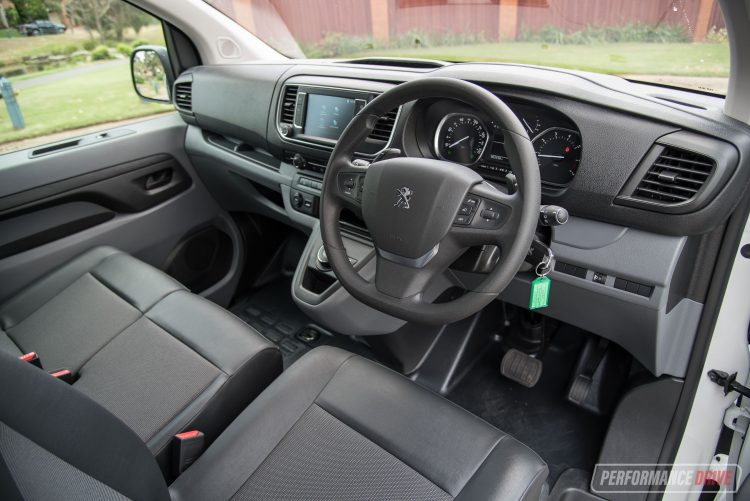
The cabin has clearly been designed with customer feedback in mind. It is as practical and thoughtful as they come. You’ve got loads of little and large storage pockets around the place, including under and on top of the dash, while a handy 7.0-inch touch-screen media interface provides a good level of functionality, equipped with Android Auto and Apple CarPlay, and a rear-view camera.
About the only aspect that isn’t so thoughtful is the position of the cup holder. It’s right up on top of the dash. This isn’t ideal during Australia’s hot summer months as your cool drink soon becomes a warm one. There’s one on the passenger side as well.
Passenger comfort is pretty good for this style of vehicle, and of course forward visibility is just excellent. There are three seats across for all variants, and you can flip down the centre seat for a more conventional arm rest and console. We feel like the centre console, when flipped down, is quite limited in use though as it is just a flat try. Items quickly slide away after a few corners.
2020 Peugeot Expert 150 HDI Standard – THE DRIVE
Called the 150 HDi, this is a relatively old powertrain from PSA (Groupe PSA, former owners of Peugeot – now rolled into Stellantis group with FCA). It produces a healthy amount of power and torque though, and feels quite zippy and free-spirited on the road. Matched to the EAT6 auto transmission, built by Toyota-owned Aisin, the engine always seems to have plenty of grunt to get you shifting along ahead of the traffic.
I must admit, I have a secret driving fetish with vans. I’m not sure what it is. Perhaps it’s the direct view ahead or the mechanical feel they often provide that turns me on. But there’s something fun about them. And the Peugeot does well in this department. The steering offers good communication so you always know where the wheels are on the road, and the powertrain gets up and loves to boogie. Obviously all of this experience would change if the van were filled with heavy tools and/or cargo.
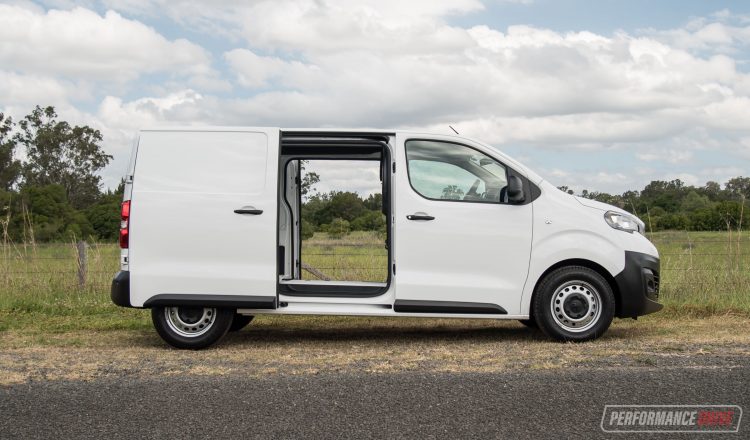
Across the standard 0-100km/h sprint we clocked a best time of 10.56 seconds. And yes, we had a smile on our face during every test run. It’s impossible not to giggly at innocent wheelspin off the line, with all of that 370Nm of torque attacking the front wheels from just 2000rpm. Screeching tyres are usually frowned upon. But if it’s coming from a van it’s suddenly inoffensive and funny.
The Expert holds itself together well in the corners too, not that it’s specifically designed for corners. Nonetheless, the independent rear suspension does well to absorb mid-corner bumps, and body roll is well resolved. Even with these Michelin Agilis light commercial vehicle tyres, there is decent lateral grip. However, braking performance isn’t impressive. We clocked a best stopping distance of 46.49m across 100-0km/h. This isn’t good, even for a commercial vehicle.
Fuel economy is rated at 6.4L/100km on the official combined cycle. That’s excellent for this class. With a 69L fuel tank it translates to a theoretical average range of 1078km. During our week of driving we recorded an average consumption of 7.1L/100km. Keep in mind we were not carrying heavy loads in the back like you probably will be.
2020 Peugeot Expert 150 HDI Standard – THE VIDEO
2020 Peugeot Expert 150 HDI Standard – THE VERDICT
It is the least popular van on the local market, but we can’t figure out a critical reason why. It drives nicely, goes very well for its class and offers good economy, and the interior is well packaged and thoughtfully laid out. A respectable warranty period and long servicing intervals also make it quite a competitive proposition. In the end, we think a lot of it is down to sheer lack of awareness, and perhaps the fact that the top-sellers are just so well established here.
[column width=”47%” padding=”6%”]PROS:
– 2.0TD provides good performance and economy
– Thoughtful cabin with lots of storage pockets
– Standard touch-screen with Android Auto/Apple CarPlay
– Innovative ‘Moduwork’ hatch behind passenger seat for added cargo space
– 20,000km/12-month service intervals
[/column] [column width=”47%” padding=”0″]CONS:
– Not the biggest cargo area of the class
– Peugeot name lacks presence/reputation in this segment in Australia[/column][end_columns]
As always, if you’re thinking about buying a new car don’t forget to click here to speak with our car buying specialists.
